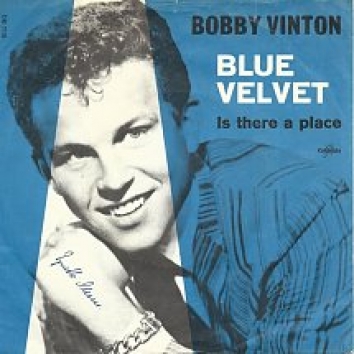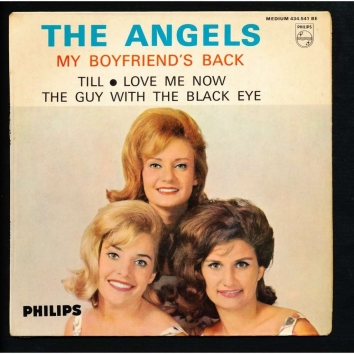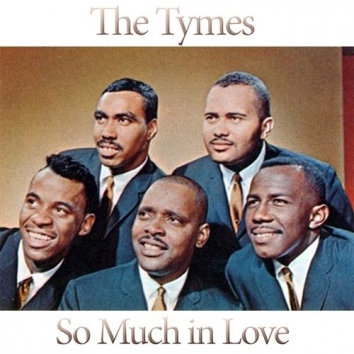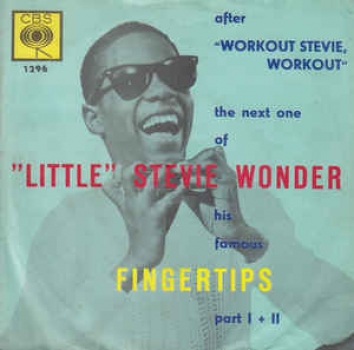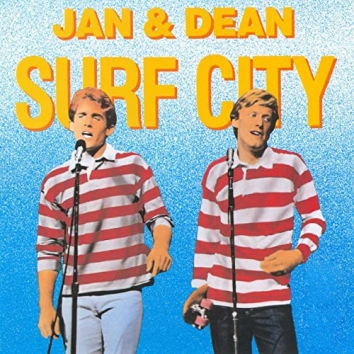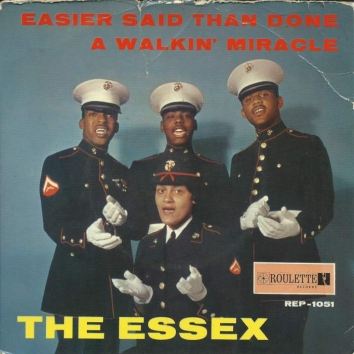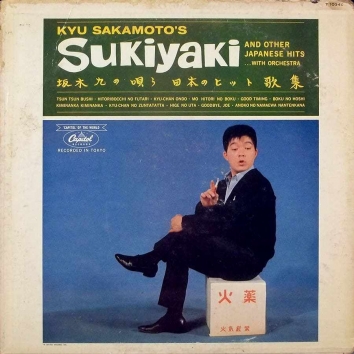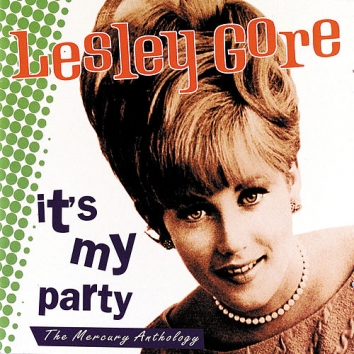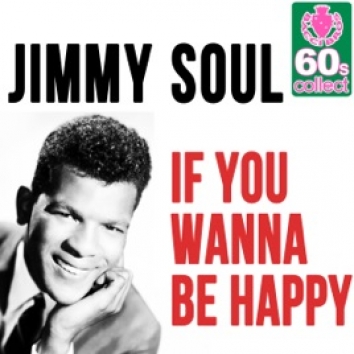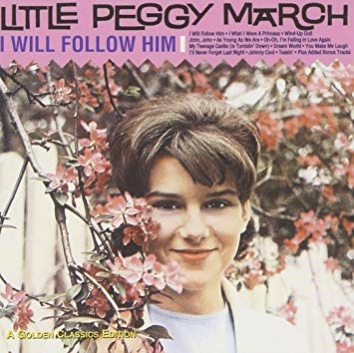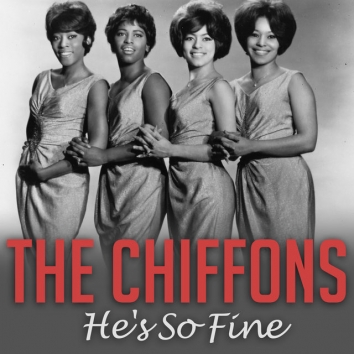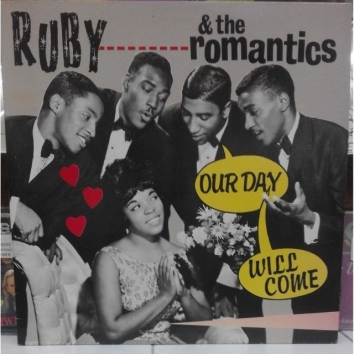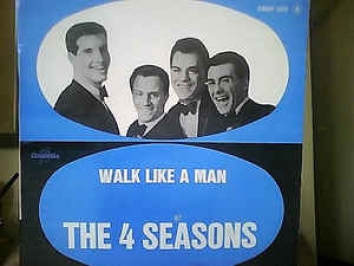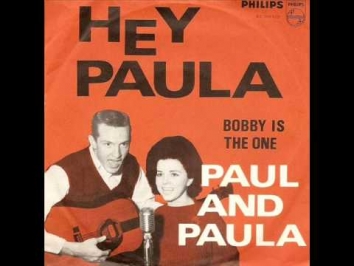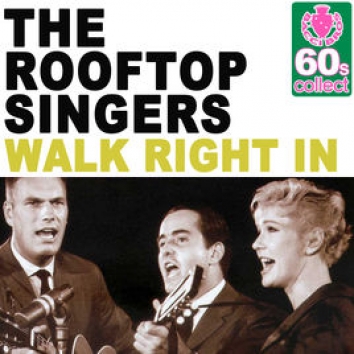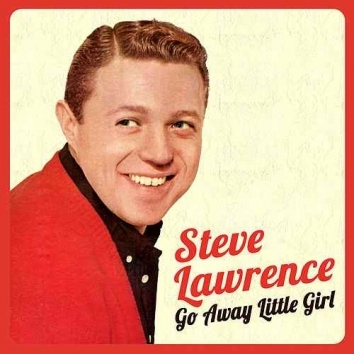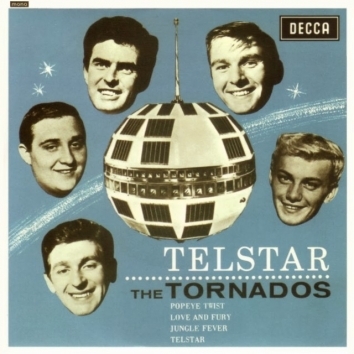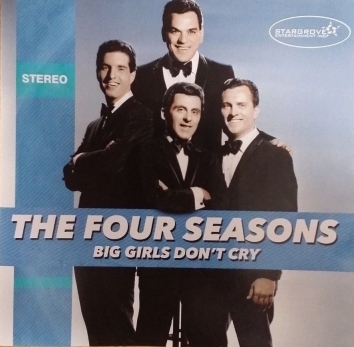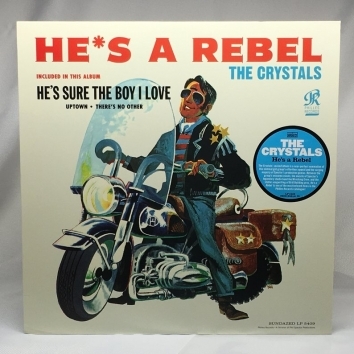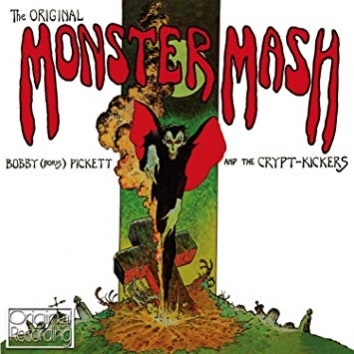History of Number One Songs (134)
Blue Velvet
September 21 – October 11, 1963
Bobby Vinton
Blue Velvet
I have already tackled Bobby Vinton before with his previous number one, “Roses are Red”, but with “Blue Velvet”, I have a haunting song, though we suspect that vibe was unintentional.
The song itself was written by Bernie Wayne and Lee Morris in 1950. Wayne alleged that he got inspired by a stay at the Jefferson Hotel in Richmond, Virginia, where he saw a lady wearing blue velvet at a party. According to musical legend, the two hooked up (as the kids say), and a song was envisioned. I don’t know if any of that is true, but let’s say it is, as it makes a far better story!
The first recorded version of note was by Tony Bennett in 1951. It charted in the top 20, and within the same year, Arthur Pryscock recorded his version, which coincidentally also went to the top twenty. Bill Farrell and Norman Kaye would also get in on the “Blue Velvet Gravy Train”, as both charted that year with their versions. At one time, all four variations were charted at the same time!
Can you imagine something like that occurring today? Impossible!
The Clovers took a crack in 1955, and the Statutes had a low-scoring hit with it in the early Rock and Roll era. With all due respect to the previous versions, most people of a certain age will always attribute it to Vinton.
Bobby Vinton would record a concept album of sorts where every song would have the word “blue” in it. This included recordings of “Am I Blue”, “Mr. Blue”, “Blue Skies”, “Blue Hawaii”, “Blue Moon”, “Blueberry Hill” and “My Blue Heaven”, but it was “Blue Velvet” that was hidden gem that would become his second number one hit. I say “hidden”, as Vinton believed that his cover of “Am I Blue”, would be the hit, but the powers that be proved to be right.
It was a romantic song, but that depended on your impression of it. Most people just recall that the woman in question wore a blue velvet dress, but they rarely paid attention to the lyrics that followed. This was not a love song so much as it was about a one-night stand that remained etched in the singer’s mind, and would always be a sly smile on his face that only he understood.
In 1986, the unique filmmaker, David Lynch, wrote and directed the film, Blue Velvet, which incorporated the song, and utilized the Vinton version in the flick. Anyone who watched this film would be hard-pressed to hear the Vinton tune without seeing Isabella Rossellini at her most sultry.
Blue Velvet never seemed sexier.
Other Notable Songs that charted but did not go to number one in this time period: September 21, 1963 – October 11, 1963.
9/21/63: Heat Wave by the Martha and the Vandellas went to #4 but would go all the way to the top of the R&B Chart.
9/21/63: Mickey’s Monkey by Smokey Robinson and the Miracles reached #8, but went as high as #3 on the R&B Chart.
9/28/63: Sally, Go Round the Roses by The Jaynetts went to #2, and to #4 on the R&B Chart.
9/28/63: Little Deuce Coupe by The Beach Boys hit #15.
My Boyfriend's Back
August 31 – September 20, 1963
The Angels
My Boyfriends Back
Where was her boyfriend anyway?
Back from where?
Because of the tone and era, I imagine he was a year or two older than the damsel in distress, and maybe he was coming back from college. I would prefer to envision that he was returning after a stint in jail where he brutally murdered a prostitute in a seedy motel, after making a shocking Crying Game like discovery during the dirty deed.
What’s wrong with me?
Let’s return to the innocence and the song, but as this is the only time we will see the Angels, with “My Boyfriends Back”, which is arguably one of the most successful and remembered girl group songs of the 60s. That is the case for the song, though not for the Angels.
“My Boyfriends Back” was not the first hit by the Angels, as in 1961 they had a #14 hit with ‘Til in 1961. From New Jersey, the group initially consisted of sisters, Barbara and Phyllis Allbut[1], who flanked their lead singer Linda Jansen. Jansen left to pursue a solo career, and she would be replaced with Peggy Santiglia.[2]
This was a better move for the group, as Santiglia has a more marketable voice, that could also serve multiple purposes. Under their new label, Smash Records, the group recorded a demo of “My Boyfriends Back”, a song penned by the songwriting trio of Bob Feldman, Jerry Goldstein and Richard Gottehrer. This group was interesting enough in their own right, as the trio from New York City would later create a band called “The Strangeloves”. They would even create a fictional backstory that they were Australian sheep farmers, and it was their way of keeping up (or countering) with the British Invasion. Their biggest hit, was “I Want Candy”, which went to #11 in 1965.
Anyway, the demo, which was originally meant to be shopped to the Shirelles, was considered good enough to release as a single, which is exactly what they did. It checked so many of the boxes, to make it a hit. With the hand clapping, easy to follow lyrics and story, harmonies and horn infused arrangement, girls everywhere could sing along to it.
It opened with a verbal warning, which told any listener exactly everything you needed to know:
He went away,[3] and you hung around
And bothered me, every night
And when I wouldn’t go out with you
You said things that weren’t very nice
Simple right?
It continued, with the most recognized part and most repeated part:
My boyfriend’s back, and you’re gonna be in trouble
Hey-la-day-la my boyfriend’s back
While the song was so easy for anyone to sing (especially girls), the message of someone of a man/boy spreading bullshit about bedding (or whatever innocent or non-innocent idea) and getting what was coming to them was something that women of any day, and really any age can understand. We all know many men who have lied about their amount of sexual conquests, and while women are stereotyped as gossipers, that attribute can be found in any gender, even the non-binary ones that nobody in 1963 could envision.
Even if you were a young girl who had yet to have a boyfriend, that individual could easy long for the day where they had a man in their life who would protect that them that way. That seems a little (a lot) antiquated now, but if you strip away the gender roles, it is still about your significant other having your back and righting a wrong at your expense. This seems relatable, and remains a fun song to sing, regardless of the era.
Other Notable Songs that charted but did not go to number one in this time period: August 31, 1963 – September 20, 1963.
8/31/63: Be My Baby by the Ronettes went to #2 and reached #4 on the R&B Chart.[4]
9/7/63: Monkey Time by Major Lance reached #8, but went as high as #2 on the R&B Chart.
9/14/63: Then He Kissed Me by The Crystals went to #6 but went to #8 on the R&B Chart.[5]
9/14/63: Lonely Surfer by Jack Nitzsche hit #39.
[1] Apparently, the sisters had the nicknames of “Jiggs and Bibs”. Sounds like bad stripper names to me.
[2] How did her solo career go? As well, as you think it went.
[3] Again, where the fuck did he go?
[4] For what it is worth, I consider “Be My Baby” to be one of the greatest songs, not only of its kind but ever. If I had Doc’s DeLorean, I would go back in time to try to date Ronnie Spector.
[5] I don’t feel as strong as I do about this song as I do about the Ronettes’ “Be My Baby”, but this also would have been a great one to have talked about.
So Much In Love
August 3 – August 9, 1963
The Tymes
So Much in Love
There is so much I need to apologize for as I write this anthology.
No, I don’t mean at times where you might be offended by comments I make throughout. If you got this far, then I expect that you know what you are getting into.
What I am referring to here is that when I am writing about this next song, I feel like I “have been, done that” with so many thoughts that are populating my synapses for this song. The reason why I think that is obvious. It is because I am repeating some tropes that I have used before, and some more that I will use many more times moving forward.
The first, is repeating the lens in which I view music. I was born in 1972 and was raised in Canada, and this reflects every aspect on how I see pop culture. I know that I have referenced Fast Times at Ridgemont High before, and I am going to do so again.[1] While I know I would have been nine years old when they film came out, its life on video cassette and cable reruns spoke to me, and I probably have seen this film fifty times.[2] It spoke to me as a pre-teen, a teen, a twenty-something, a thirty-something and now as a middle-aged man.
Why do I bring this up?
Because, the first time I heard the song in question was a cover in Fast Times by former and future Eagles member, Timothy B. Schmidt.
Seriously, just listen to that soundtrack and ask yourself if the whole thing does not have the Eagles all over it!
But as always, I digress.
I would learn later that Schmidt’s version was a cover of the Tymes #1 hit from 1963. So now that we got that out of the way, let’s get to who the Tymes were.
Formed in 1956 in Philadelphia, the Tymes were originally called the Latineers, and were comprised of Donald Banks, Albert Berry, Norman Burnett and George Hilliard. The quartet didn’t do much beyond playing clubs in Philly for four years and they would add George Williams in 1960, to front the group, thus making them a quintet. A name change to the Tymes occurred, and they continued along, and would compete in a talent show sponsored by a local radio station. That would lead to a local label, Cameo-Parkway signing them to a contract.
Williams penned “So Much In Love”, that would be reworked by Roy Stragis and their producer, Billy Jackson. It was in the doo-wop form, was easy to hum along to, and was one of the sweetest sounding tunes of its day.
Like many groups in their day, and for that matter every “day” in music history, the first charting song for the Tymes was their biggest hit.[3] They had a second top-ten hit in 1963 with “Wonderful Wonderful” and their third song, “Somewhere”, would go to #19. As far as solid chart success, this was it for the Tymes. Sort of.
As with many doo-wop groups, the Tymes were rendered obsolete by the British Invasion.[4] This didn’t mean that they disbanded, as they would continue to record, though would embrace a more soulful sound. This wasn’t doom and gloom for the Tymes as they were still able to tour and make a living throughout the rest of the 60s and early 70s, but a comeback for them was on the horizon, though not in the United States.
In 1974, the Tymes released a single called “Ms Grace” that only went to #91 in the United States and only #75 on the R&B Chart. For whatever reason, this slow and soulful song would catch on in the United Kingdom and it went #1 in that musically influential nation.[5] It gave them a new lease on life, and another place to tour as long as some incarnation of their group existed. This leads me to my final trope.
When you are an African-American group without charismatic (memorable) members, you can be interchangeable. This would lead in the latter days to the band having members perform for them in concerts who were not there during their heyday, with many an audience member oblivious to that fact. They would splinter and multiple versions would actually perform in the oldies circuit, but this was not exactly uncommon, hence why I called it a trope.
That’s it for this one. I am sure we will replicate this series of tropes again,
And many others.
Other Notable Songs that charted but did not go to number one in this time period: August 3, 1963 – August 9, 1963.
8/3/63: Surfer Girl by The Beach Boys went to #7 and reached #18 on the R&B Chart.
8/3/63: Detroit City by Bobby Bare reached #16 but climbed to #6 on the Country & Western Chart and to #4 on the Adult Contemporary Chart.
8/3/63: Six Days n the Road by Dave Dudley went to #32 but went to #2 on the Country & Western Chart.
[1] I am sure I will do so again, and again.
[2] I have seen the Phoebe Cates pool scene 200 times.
[3] Here is that second trope.
[4] Here is another trope.
[5] At some point, this makes me want to repeat this entire process for #1s in the U.K.
Fingertips
August 10 – August 30, 1963
“Little” Stevie Wonder
Fingertips
What were you doing when you were 13?
As for myself, I was wallowing in self-pity in badly fitted and outdated clothes, and was petrified about what lay ahead me in high school. I hate using the overused term “nervous wreck”, but that is precisely what I was.
See, I am deeper than you thought!
Maybe, I’m not.
Let’s move on.
Like most of you, music was an escape, but I learned pretty early that while I can listen to a song and gauge with decent accuracy what influenced it, I knew I couldn’t play it. I know for sure that if I was a child in 1963 and I saw “Little” Stevie Wonder on my television screen, I would wonder how did so much talent get into someone so young. I am also wondering why the hell I can’t figure out how to play chopsticks on the piano.
But I digress (again).
Born Stevland Hardaway Judkins in Saginaw, Michigan in 1950, was born six weeks early. At the time of his birth, he had retinopathy of prematurity. The doctors would place him in an incubator, but that would hasten the issues with his eyes, and he would become blind as an infant.
The Judkins family moved to Detroit, and their child, Stevland, showed an aptitude for music. He would self-teach himself the drums, piano and harmonica before the age of 10 and he was a clear a musical prodigy on a level that nobody had seen in years.
Stevie would sing in the church choir and would perform anywhere he could. At the age of 11, he was singing with his friends on the street corner and he caught the ear of Ronnie White, who was a member of the Miracles. He would arrange an audition with Motown founder, Berry Gordy Jr., who knew he had something phenomenal on his hands. Stevland Judkins was signed immediately. “Little” Stevie Wonder was born.
The first output was an instrumental album, “The Jazz Soul of Little Stevie Wonder”, designed to showcase all of Wonder’s musical abilities. It was followed with the natural follow-up, “Tribute to Uncle Ray”, which as the name suggests was an album of Ray Charles covers, who like Wonder was a multi-talented blind African-American. His third album would be the one that placed him on the national stage, “Little Stevie Wonder the 12 Year Old Genius”, which might be the most appropriately named album of all time.
It was recorded live at the Regal Theatre in Chicago, and it notably had fellow future Rock and Roll Hall of Famer, Marvin Gaye, playing the drums. Released as a single, was “Fingertips”, an infectious and fun instrumental that featured Wonder’s harmonica abilities. He would get national television spots where he performed it, and likeability was instantaneous. That talent, that smile, that joy. How could you not love him?
“Fingertips” made Stevie Wonder the youngest person to reach number one, which was broken by Michael Jackson of the Jackson 5 by the decade’s end, though he still holds the record for the youngest number one by a solo performer.
Had I been alive in 1963, the cynic in me would have thought that this would be the end of Stevie Wonder. I would have thought how far could a blind harmonica master go in the modern music world?[1] As my wife likes to tell me (often), I would have been wrong.
I would like to think that many people in 1963 thought the same when prognosticating Wonder’s future. With that one song, the wide breadth of Wonder’s skills was not on display. The Songwriting, the voice, the other instruments he had mastered were not yet evident if you only knew him from this one song, and for a time, that is how much of America knew him. Some people, viewed him as a curiosity, and you could easily think the fact that a blind black kid made it this far would be the pinnacle of his career. Anyone, who would have listened to his album, “Little Stevie Wonder the 12 Year Old Genius”, or any of the other albums that he had already would have known better.
As it stands now, Wonder’s first number one hit likely isn’t even among his top twenty most known. I could even argue that many people who claim to fans of Wonder may not even know this song at all.
We have a lot more of Stevie Wonder to come, but he won’t be “little” when we get there.
Other Notable Songs that charted but did not go to number one in this time period: August 10, 1963 – August 30, 1963.
8/10/63: Wipe Out by The Surfaris went to #2 and reached #10 on the R&B Chart.
8/10/63: (You’re The) Devil in Disguise by Elvis Presley reached #3.
8/17/63: Blowin’ in the Wind by Peter, Paul & Mary went to #2 but went to #1 on the Adult Contemporary Chart.
8/24/63: More by Kai Winding went to #8 but would climb to #2 on the Adult Contemporary Chart.
8/24/63: Denise by Randy & the Rainbows went to #10 and also hit #18 on the R&B Chart.
8/24/63: I (Who Have Nothing) by Ben E. King hit #9, went to #16 on the R&B Chart, and also reached #10 on the Adult Contemporary Chart.
8/24/63: These Foolish Things by James Brown reached #55, and went to #25 on the R*B Chart.
[1] I am painting that statement as if I only knew him from one song. Remember, he didn’t sing in it, so initial listeners would not have any idea just how well he could do perform with his pipes.
Surf City
July 20 – August 2, 1963
Jan & Dean
Surf City
California is a huge part of the American music scene, and while in this series I have discussed a lot of music that had its origin there, this is the first time that that a number one song “felt” Californian. This ends with “Surf City”, the first “Surf Music” tune to make it to the top. Before I get to the song in question, let’s take a detour into how we got to one of the most iconic musical genres of the 60s.
While casual music fans often equate the surf sound to the Beach Boys and Jan & Dean, the origin is exactly what the title states: music that was designed and inspired by the ocean waves. Most of the original music were instrumentals with the electric guitar at the forefront, much of which having a spring reverb. The belief was that sounded “wet” like crashing waves and whether you believed that or not, it was definitely unique for its time.
Groups like the Surfaris and the Chantays with have hits “Wipe Out” and “Pipeline” respectively, and the “King of the Surf Guitar” Dick Dale was inspiring young guitarists everywhere. This may have been true surf music but without lyric, the average music fan had no idea what the music was trying to convey.
Music historians point to the emergence of the Beach Boys and Jan & Dean as the “Second Wave of Surf Music”. Lyrically, songs about surfing emerged, with these two groups leading the pack. In 1962 and 1963, The Beach Boys had three hits with the word “surf” in it; “Surfin’ Safari”, “Surfin’ U.S.A.” and “Surfer Girl” and even their band name conjured up images of beach activities, of which surfing was one.[1] Musically speaking the Beach Boys and Jan & Dean were focused on harmonies and fun rhythms and they really bore little resemblance to the music of Dick Dale and company, but this did not stop them from being lumped together. It is like saying Will Smith’s rap and Public Enemy are the same because they both rapped. Nobody thinks that now, but in the early 60s many people did. Subgenres in music have always existed, but music critics back then rarely discussed it.
Because of the overall success of the Beach Boys, the fact they seemingly never stopped touring and that there were multiple Greatest Hits albums, it would be an easy assumption that they would be the first “Surf” act to hit the top. They weren’t as Jan & Dean beat them to it with “Surf City”.
The fact that Jan & Dean hit the top first did not mean that the Beach Boys, most specifically, Brian Wilson did not have his fingerprints all over it. Wilson and the other members of the Beach Boys had become friends with Jan Berry and Dean Torrance, and they were certainly (especially Wilson) on the duo from Los Angeles.
Prior to their meeting, Jan & Dean went to high school together and like so many teens they got into music and formed a band. As that was the late 50s, a lot of their early work was doo-wop influenced, but it appeared as if the pair, or at least the duo of Jan & Dean was over before it started.
Jan & Dean were part of a group called “The Barons”, who were little more than a cover band. After winning a high school contest, only Jan, Dean and another member, Arnie Ginsberg remained in music. Ginsberg wrote a song called “Jennie Lee”, that was inspired by a stripper of the same name. The three of them polished the song, but before they could record it, Dean was drafted into the military and it was left to Jan and Arnie to record it. They were able to sell it to Arwin Records, and it became a surprise hit, that went to number 8 and was a #4 hit on the R&B Chart. As Dean Torrance was not part of the group, the single was credited to Jan & Arnie, but that pairing was short-lived. After a few more singles, Dean’s six-month service was over and he replaced Arnie, who drifted off into the abyss of musical footnotes.[2]
Jan & Dean would secure minor hits in the early 60s, but they began to tour with the Beach Boys. The groups would become friends and would begin to influence each other musically, hence where are getting to “Surf City”.
Brian Wilson was working on the song that would become “Surf City” but he hit the proverbial mental wall. He gave that Jan Berry, who completed it and with Wilson singing back-up, “Surf City” was recorded.
This was their first foray into the surf sound, and harmonies paired with the fun lyrics was a tonic for success. How could any young teenager not want to go to a place where it was “two girls for every boy”?[3] This was a song to party to, you could dance to it and without being overtly sexual, that feature was there.
The British Invasion came, but Jan & Dean were able to survive. They never had another #1 hit, but they did continue to have hits with “Drag City”, “Dead Man’s Curve” and “The Little Old Lady From Pasadena”. Their momentum would however come to a screeching halt on April 12, 1966.
On that day, ironically not that far from the actual Dead Man’s Curve, Jan Berry would be badly hurt in a car crash. He suffered massive head injuries and he was need time to recover from brain damage and partial paralysis. Needless to say, Jan & Dean’s recordings were halted and Berry would have to learn how to walk again and write with his other arm.
While the group would have a few more recordings that they had in the can, that was it for the pair in terms of staying in the contemporary eye. They would reunite sporadically on oldies’ circuits, though again it seems so strange that they were in that category in their 30’s, especially with how music is now. Berry would die in 2004 at the age of 64.
Jan & Dean wouldn’t manage to keep a long-running career like the Beach Boys, but their subtle aggressive attitude and rebellious nature would be cited as influence from the early Punk bands. The Beach Boys will always correctly be remembered for the sound they created but it should never be forgotten that for a few years, Jan & Dean were right there with them.
In my opinion (and this is my anthology), this is one of the most underrated groups is Rock and Roll history.
Other Notable Songs that charted but did not go to number one in this time period: July 20, 1963 – August 2, 1963.
7/20/63: Memphis by Lonnie Mack went to #5 and reached #4 on the R&B Chart.
[1] As some of you may know, Brian Wilson, the main songwriter for the Beach Boys would state that he hated his group being referred to as Surf Music. I will get to more of that later as this anthology progresses.
[2] Have I mentioned how much I love footnotes? I did? Well, I’m doing it again.
[3] Where the hell were those places when I was a teen? Actually, it wouldn’t have mattered. I still would have struck out.
Easier Said Than Done
July 6 – July 19, 1963
The Essex
Easier Said Than Done
Sukiyaki
June 6 – July 29, 1963
Kyu Sakamoto
Sukiyaki
It's My Party
June 1 – June 14, 1963
Lesley Gore
It’s My Party
If You Wanna Be Happy
May 18 – 31, 1963
Jimmy Soul
If You Wanna Be Happy
I Will Follow Him
April 27 – May 17, 1963
Little Peggy March
I Will Follow Him
He's So Fine
March 30 – April 26, 1963
The Chiffons
He’s So Fine
Our Day Will Come
March 23 – 29, 1963
Ruby & the Romantics
Our Day Will Come
Walk Like A Man
March 2 – 22, 1963
The Four Seasons
Walk Like A Man
Hey Paula
February 9 – March 1, 1963
Paul & Paula
Hey Paula
Walk Right In
January 26 – February 8, 1963
The Rooftop Singers
Walk Right In
Go Away Little Girl
January 12 – January 25, 1963
Steve Lawrence
Go Away Little Girl
Telstar
November 17 – December 21, 1962
The Four Seasons
Big Girls Don’t Cry
Big Girls Don't Cry
November 17 – December 21, 1962
The Four Seasons
Big Girls Don’t Cry
He's a Rebel
November 3 – 16, 1962
The Crystals
He’s A Rebel
Monster Mash
October 20 – November 2, 1962
Bobby “Boris” Pickett
Monster Mash


